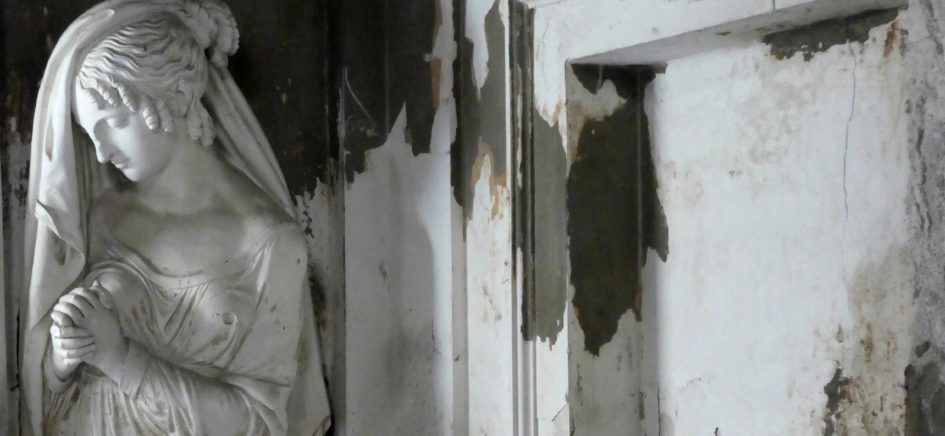Bologna’s Certosa is one of the oldest and largest cemeteries in Europe. A former Carthusian monastery, the Certosa became the city’s Monumental Cemetery in 1801. Some time later it was discovered the site had been used by the Etruscans to bury their dead as long ago as the 6th century BC. Among those who’ve been laid to rest here (in more recent history) are some of Italy’s best known poets, painters and scholars.
As the cemetery expanded cloisters, rooms and porticos were added to the original convent, but it was the propensity of Bologna’s aristocracy to erect monumental family tombs that turned the cemetery into an open-air museum.
 In fact in the early to mid-1800s the Certosa di Bologna was a regular stop on the European Grand Tour, and visits by people including Sigmund Freud, Lord Byron and Charles Dickens were well documented. In 1846 Dickens described his visit in this way:
In fact in the early to mid-1800s the Certosa di Bologna was a regular stop on the European Grand Tour, and visits by people including Sigmund Freud, Lord Byron and Charles Dickens were well documented. In 1846 Dickens described his visit in this way:
‘…in the pleasant cemetery at Bologna I found myself walking next Sunday morning among the stately marble tombs and colonnades in company with a crowd of peasants and escorted by a little cicerone of that town…’
 Not such an unusual way to spend a Sunday then. On the day of our visit to the Certosa, parishioners bustled in and out of San Girolamo – the church inside the cemetery walls – and men, women and children, too, came to visit their loved ones and tend to their graves.
Not such an unusual way to spend a Sunday then. On the day of our visit to the Certosa, parishioners bustled in and out of San Girolamo – the church inside the cemetery walls – and men, women and children, too, came to visit their loved ones and tend to their graves.
 To wander through the halls here and among the memorials and tombs is to walk a path through Bologna’s history, but far from being a place only of the dead, the Certosa di Bologna is also filled with life.
To wander through the halls here and among the memorials and tombs is to walk a path through Bologna’s history, but far from being a place only of the dead, the Certosa di Bologna is also filled with life.

10/13/2017 at 9:19 pm
Wow! What incredible history! I love that it also is filled with life! Xx
10/10/2017 at 2:25 am
How amazing to be walking in Dickens footsteps … the flowers in the wall are beautiful! Kx